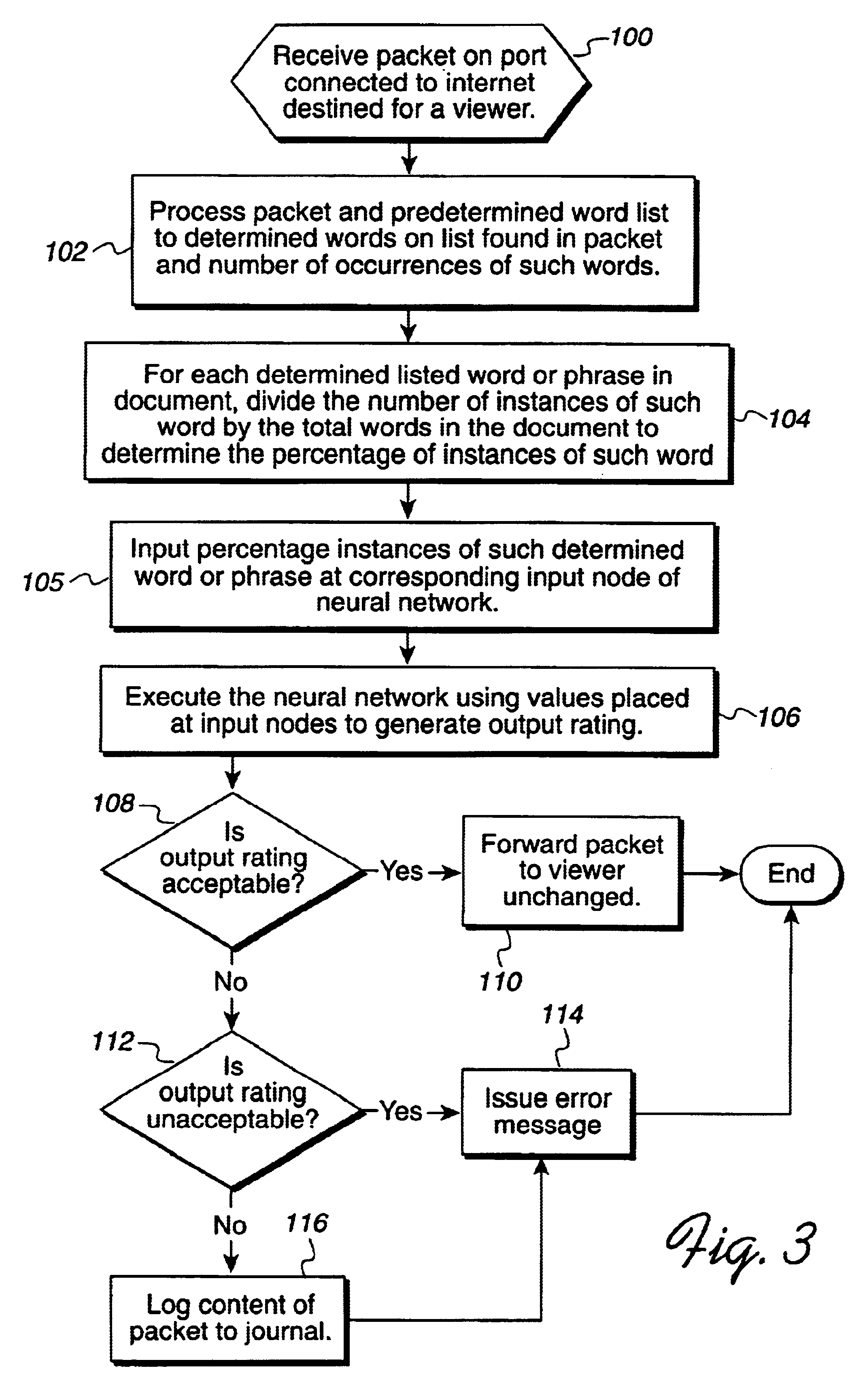Method, system, and program for filtering content using neural networks
- Summary
- Abstract
- Description
- Claims
- Application Information
AI Technical Summary
Benefits of technology
Problems solved by technology
Method used
Image
Examples
Embodiment Construction
To overcome the limitations in the prior art described above, preferred embodiments disclose a method, system, and program for filtering a data object for content deemed unacceptable by a user. A data object requested by a viewer program is received. The data object is processed to determine predefined language statements. Information on the determined language statements is inputted into a neural network to produce an output value. A determination is then made as to whether the output value indicates that the data object is,unacceptable. Viewer program access to the data object is inhibited upon determining that the data object is unacceptable.
In further embodiments, a determination is made as to whether the output value indicates that the data object requires further consideration. If so, information on the data object is logged. User input on a rating indicating the acceptability of the data object is received and the neural network is trained to process the logged data object as...
PUM
 Login to View More
Login to View More Abstract
Description
Claims
Application Information
 Login to View More
Login to View More - R&D
- Intellectual Property
- Life Sciences
- Materials
- Tech Scout
- Unparalleled Data Quality
- Higher Quality Content
- 60% Fewer Hallucinations
Browse by: Latest US Patents, China's latest patents, Technical Efficacy Thesaurus, Application Domain, Technology Topic, Popular Technical Reports.
© 2025 PatSnap. All rights reserved.Legal|Privacy policy|Modern Slavery Act Transparency Statement|Sitemap|About US| Contact US: help@patsnap.com



